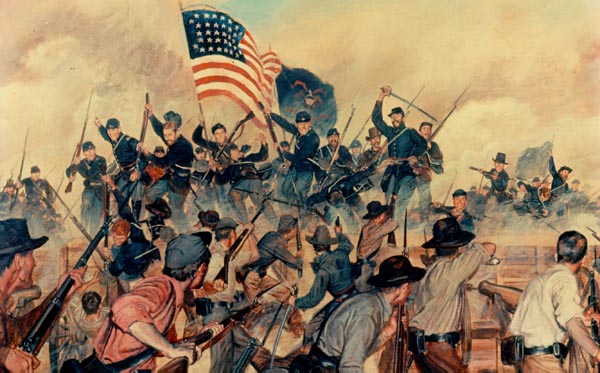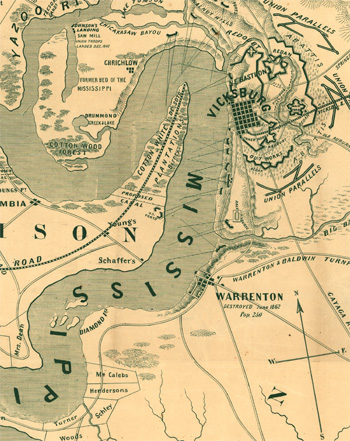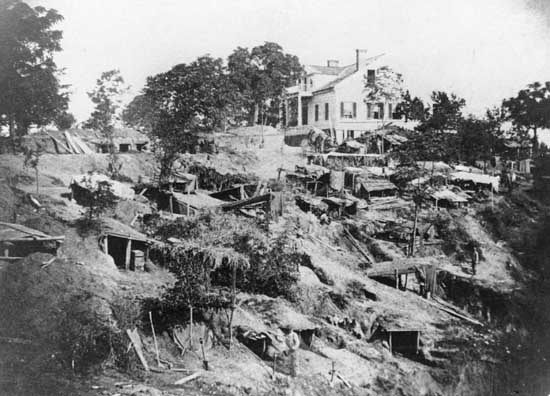Grant’s Finest Hour
Grant’s Finest Hour
Vicksburg 1863
by Nick McGrath of the Army Historical Foundation

The Vicksburg Campaign of 1863 eroded all doubt of General Ulysses S. Grant’s tactical prowess. If the Union was to take the Confederate stronghold of Vicksburg, they would have to first  cut off its supply line at Jackson, MI, which was to the east of Vicksburg. Unsuitable terrain made an assault from the north difficult, if not impossible, for an army the size of Grant’s. The only way his army could operate was if he somehow managed to land his forces to the south of Vicksburg and march to Jackson.
cut off its supply line at Jackson, MI, which was to the east of Vicksburg. Unsuitable terrain made an assault from the north difficult, if not impossible, for an army the size of Grant’s. The only way his army could operate was if he somehow managed to land his forces to the south of Vicksburg and march to Jackson.
Grant moved his Army of Tennessee by barge down the Mississippi River by night in order to avoid taking fire from the batteries at Vicksburg. It was a success, and only one transport was lost to Rebel fire. Grant’s forces were fifty miles south of Vicksburg on 30 April 1863 at a town called Bruinsburg. The next day, Union forces led by Major General John A. McClernand’s XIII Corps and a division from XVII Corps advanced inland towards the Confederate supply base at Port Gibson. After a brief, yet fierce, fight the Confederates retreated and ceded the port to the Union. Knowing that any move towards Jackson would expose his supply line to assaults from the south, Grant decided to rely on foraging. His three corps (XIII, XV, and XVII) continued to make their way inland, where they overwhelmed a Confederate force at Raymond, MI before marching to Jackson. Jackson fell on 14 May to Major General William Tecumseh Sherman’s XV Corps, cutting off a key Confederate railway junction. With Vicksburg isolated, Grant marched his army west to assault the city. His Army of Tennessee met stiff resistance from the Rebels at Champion Hill and at the Big Black River, but in both engagements the Union emerged victorious. On 19 May 1963, Grant launched his first assault on the fortifications around Vicksburg. It was repulsed, and three days later he tried again, but to no avail. The 30,000 Confederates are well dug in, so Grant decided to prepare siege works and call for reinforcements.
So began the grueling 47-day Siege of Vicksburg, where Union artillery and gunboats bombarded the city non-stop. Residents and defenders of the rebel fortress lived in makeshift bomb shelters and survived on horsemeat and rats when things got desperate. Finally, the beleaguered Confederates under Lieutenant General John Pemberton agree to surrender on July 3, 1863.
On July 4, Union soldiers marched into the city, capturing nearly 30,000 Rebels, 172 guns, and 60,000 small arms. Pemberton’s entire army was placed on parole by Grant, and the Confederacy had lost control of the Mississippi, which effectively cut it in two.
This article was contributed by the Army Historical Foundation, whose mission is to preserve the sacrifices and legacy of the American soldier. The AHF is currently campaigning for the construction of the National Museum of the United States Army just outside of Washington DC. For more information, visitwww.armyhistory.org.


